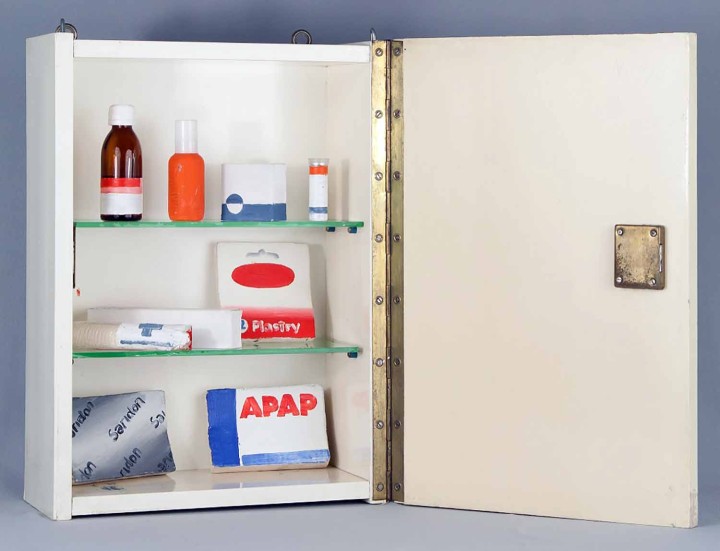Krakow’s MOCAK presents a gargantuan international show of everything we don’t want to see, telling us everything we don’t want to know. The spotlight is focused on the sick, their bodies disfigured and destroyed by illness. They are exhibited alongside the absurd results of the modern-day pursuit of beauty and youth.
The most striking parts of the exhibition are those dealing with illness: the artist’s own — as in the drawings of Polish sculptor Alina Szapocznikow — or that of the artist’s model — as in the realist paintings of Mark Gilbert from Scotland. Here art is treated as a form of therapy, wherein contact with illness allows one to acclimate to suffering and to accept one’s own weaknesses and disabilities.
One strong grouping addresses the art of medicine and how its approach to illness has evolved — as well as how intimately the history of medicine is tied to global politics. Ukrainian artist Nikita Shalennyi invokes the public autopsies that once functioned as a kind of theatrical attraction in seventeenth-century Europe. Israeli artist Shahar Marcus’s satirical video “Frog Test” (2009) turns toward the absurd forms that pregnancy tests once took — in this case the injection of a woman’s urine into a frog’s bloodstream; if the amphibian laid eggs within twenty-four hours, it meant the woman was indeed pregnant.
Joanna Rajkowska’s Uzi Submachine Gun (from the series Painkillers I, 2014) is a collection of guns made out of painkiller medications. The Polish artist based in Berlin uses a play on words to conceive of a weapon intended or to kill, or to abolish pain, but also to indicate the link between medicine and the military. Many medical advancements — such as the technology behind biological weapons — have been supported by the military and exploited in warfare.
“Medicine in Art” mentally reverberates in a visceral way. Sickness, old age and death are things we can’t escape. All we can do is refuse to succumb to the splitting of the body from the soul, which is common in today’s medicalized world. Victory over illness is often dependent upon one’s mental state and autosuggestion — as Zbigniew Libera’s Placebo (1995), a sculpture made of boxes of pseudo drugs manufactured by the all-powerful pharmaceutical industry, reminds us.


